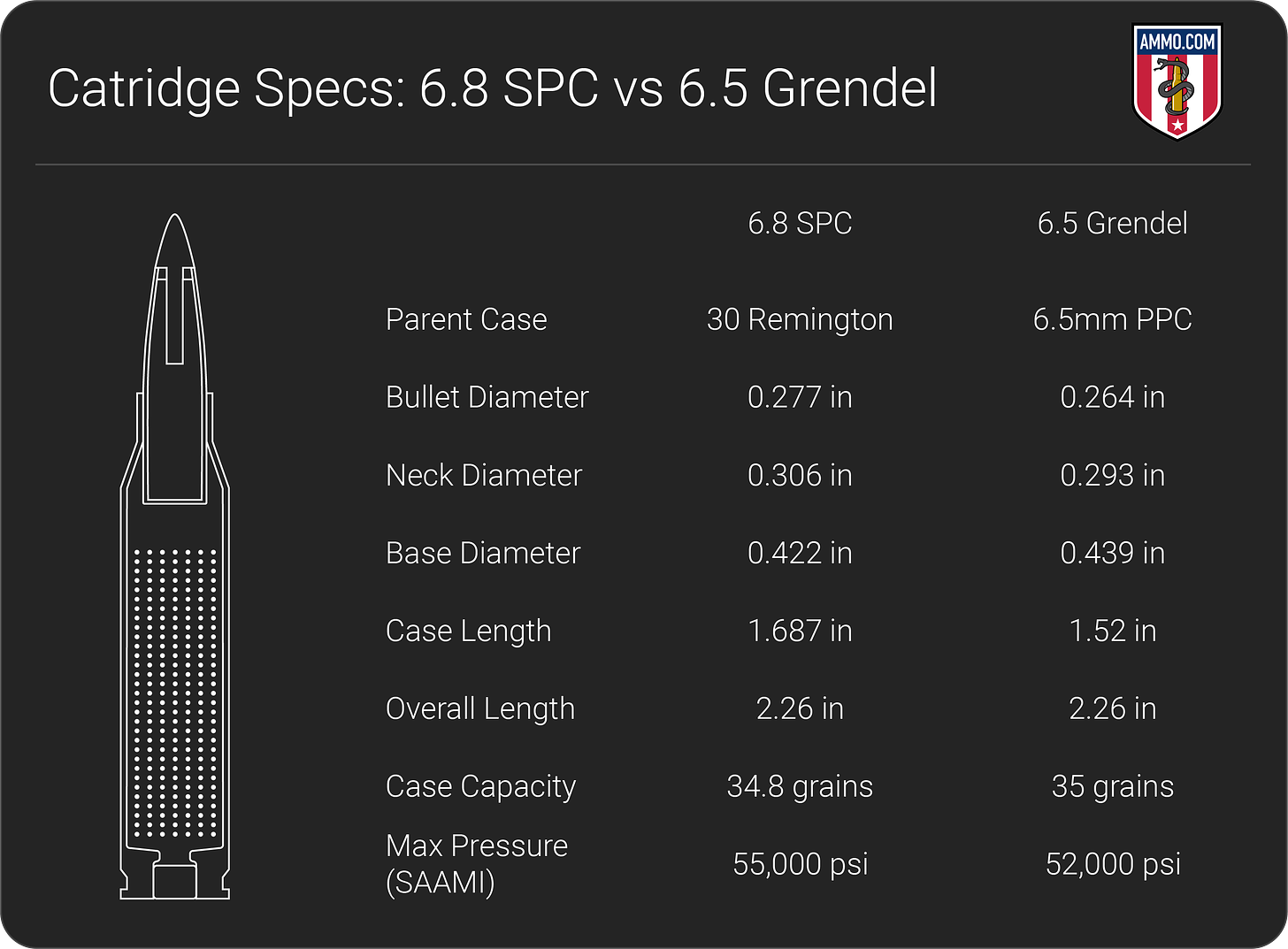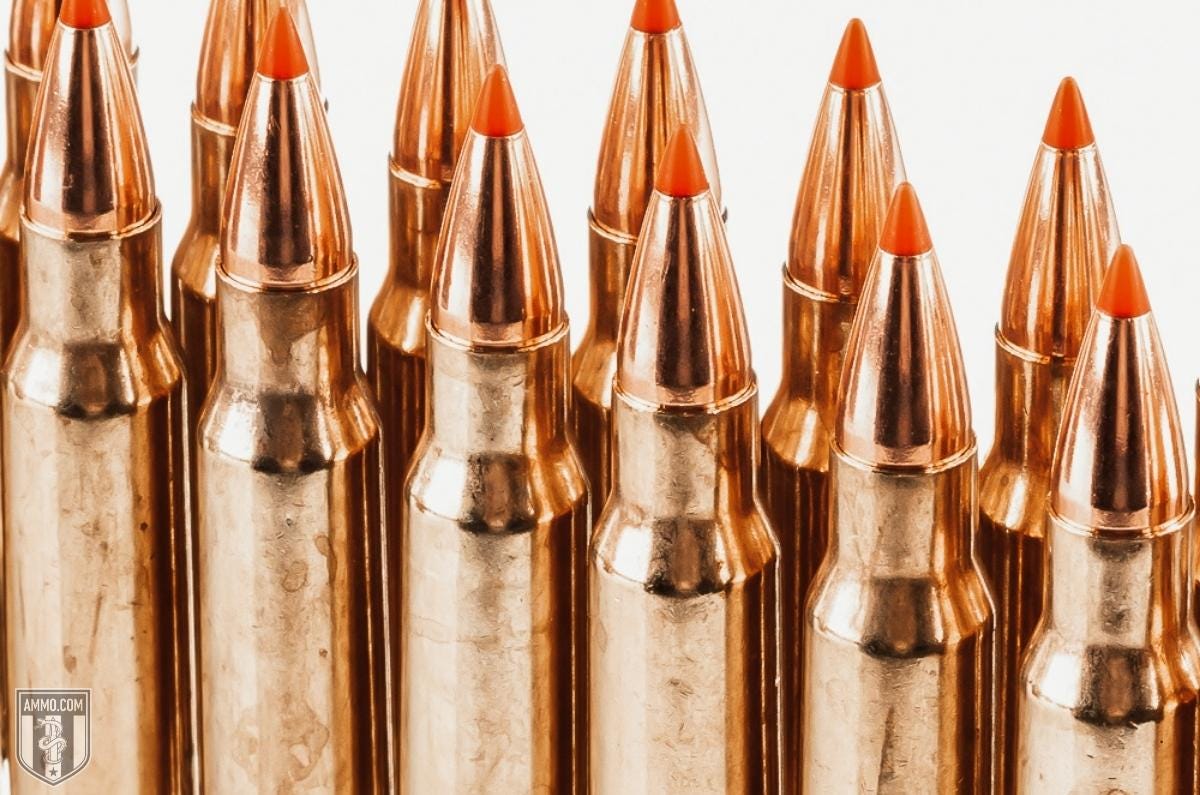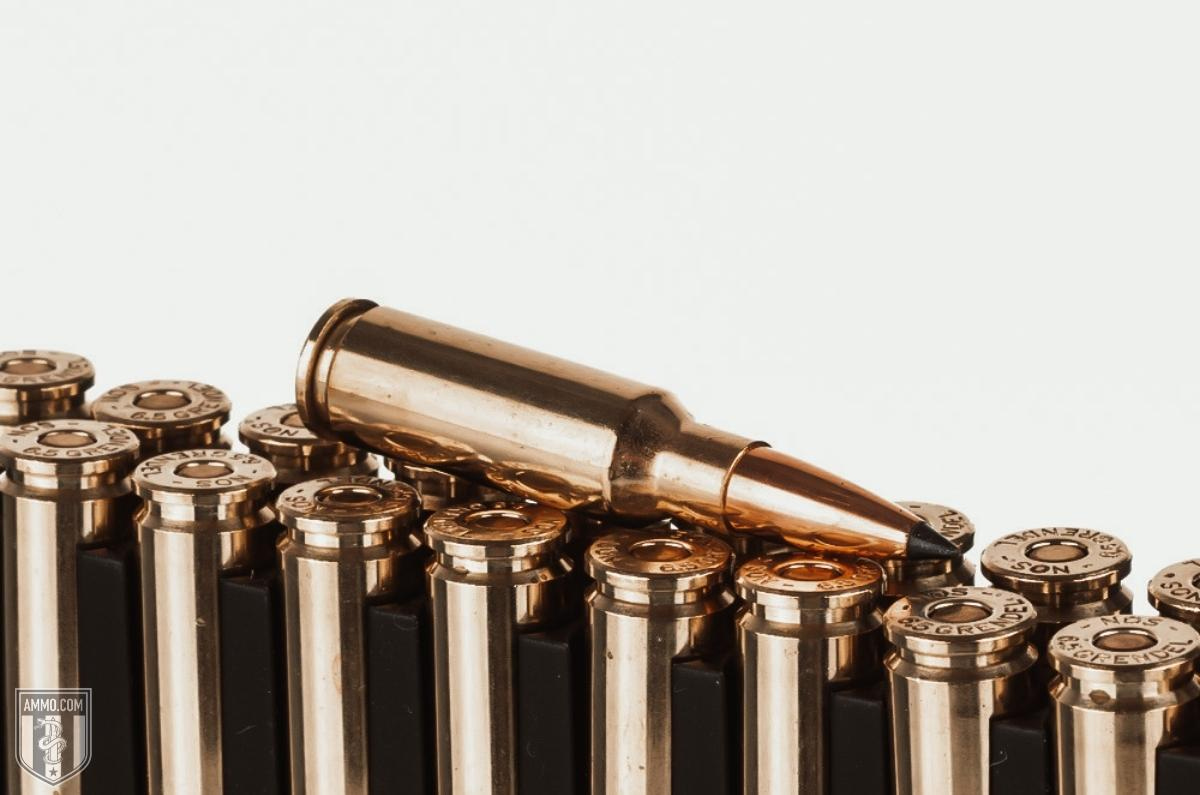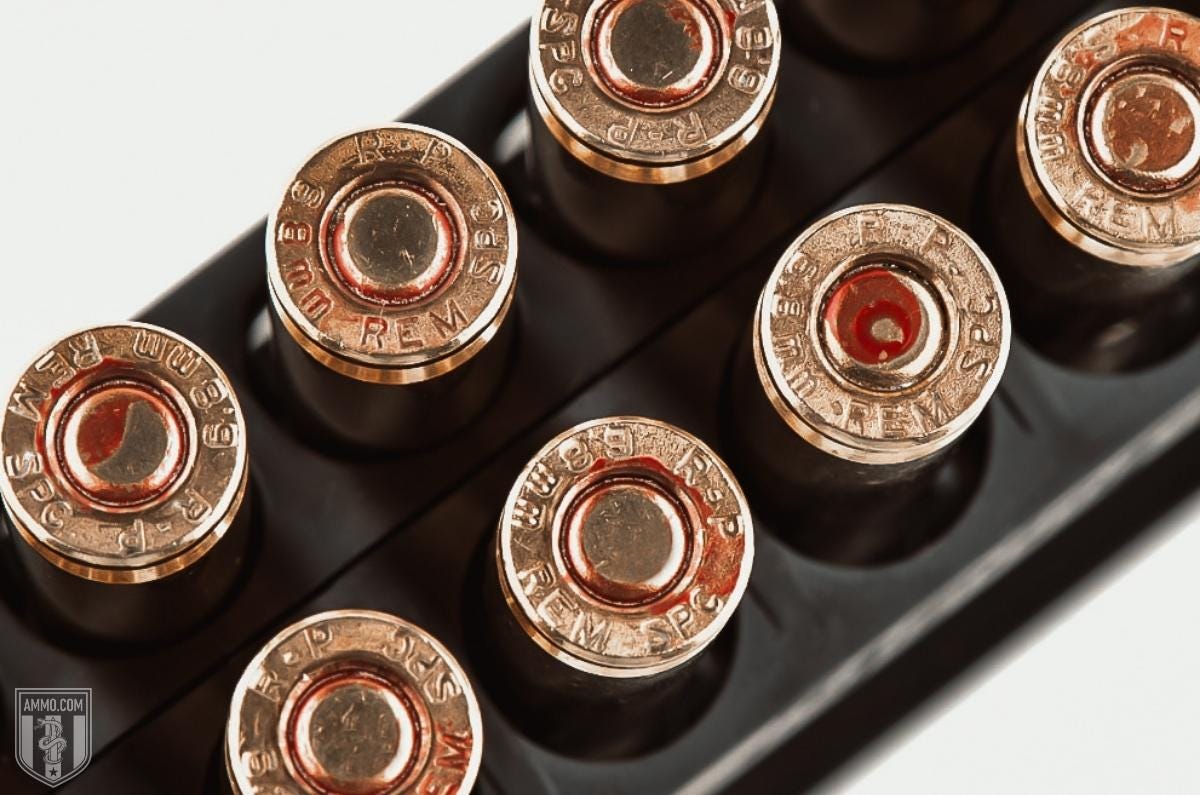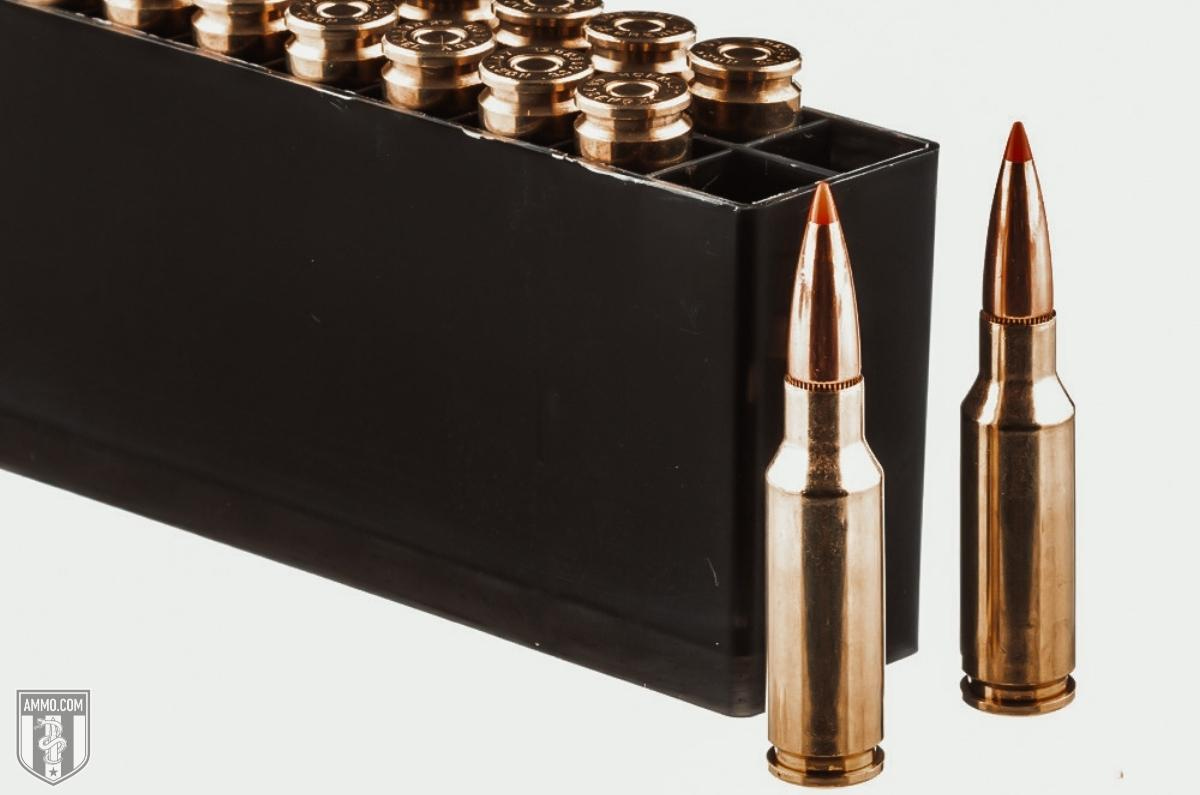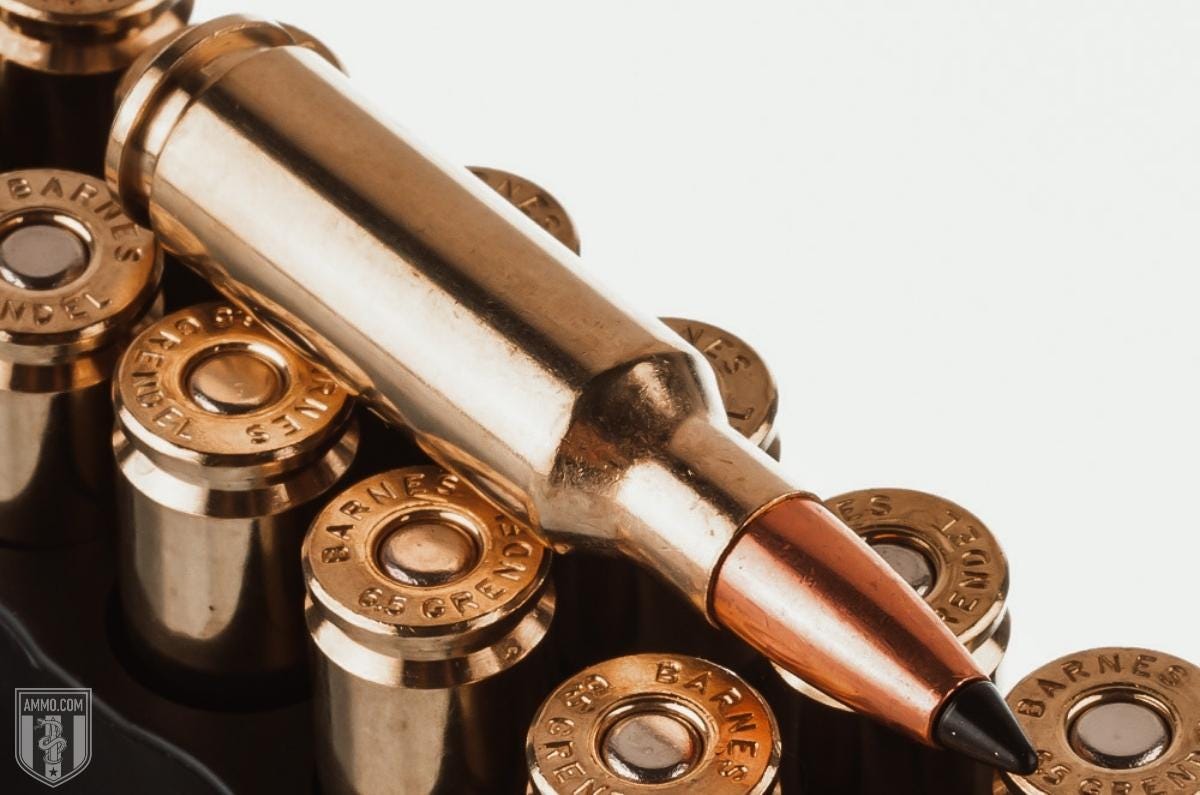 6.8 SPC vs 6.5 Grendel
6.8 SPC vs 6.5 Grendel
IPFS
6.8 SPC vs 6.5 Grendel: Enhancing The AR-15 Platform
Written by Sam Jacobs Subject: Gun RightsIn the early 2000's, there was a big push from the U.S. Army to adapt new, more powerful cartridges to the M4 carbine. This initiative was prompted by battlefield reports of enemy combatants taking multiple hits from 5.56 NATO rounds and remaining combat effective.
The 6.8 Remington Special Purpose Cartridge (SPC) and 6.5 Grendel were two new cartridges developed to increase the lethality of the AR-15 platform. Although their terminal ballistics were impressive, neither cartridge was adopted for mainstream military use.
The 6.8SPC and 6.5 Grendel may not have seen frontline combat, but they have enjoyed moderate commercial success from shooters who want a little more "oomph" out of their semi-automatic sporting rifles.
However, many 2A enthusiasts are perplexed over which cartridge to select for their new AR-15 if they want something other than the standard 5.56 NATO/223 Remington chambering. Is the 6.8 SPC better than 6.5 Grendel? Or does the 6.5 come out on top?
In this article, we will discuss the merits and shortcomings of the 6.8 SPC and 6.5 Grendel and how they can meet your shooting needs.
6.8 SPC vs 6.5 Grendel: Pimp My AR-15
What is the difference between 6.8 SPC and 6.5 Grendel?
The main differences between the 6.8 SPC and 6.5 Grendel are the bullet diameters each cartridge fires and their intended purpose. The 6.8 SPC fires 0.277" diameter bullets compared to 0.264" for 6.5 Grendel. Furthermore, the 6.8 SPC was optimized for close quarters battle (CQB) conditions and to be employed in short barreled rifles (16" or less) whereas the 6.5 Grendel is at its best when fired from a 20 inch barrel at longer ranges.
Cartridge Specs
When evaluating centerfire rifle cartridges, it's a good idea to analyze the cartridge specs to gain more knowledge of each.
The biggest difference between the 6.5 Grendel vs 6.8 SPC are the bullets they fire.
The 6.5 Grendel fires the sleek, aerodynamic 0.264" diameter bullets also fired by cartridges like the 6.5 Creedmoor, 260 Remington, and 6.5 PRC just to name a few. Grendel ammo is typically loaded with bullet weights ranging between 90-130 gr with the 100, 110, 120, and 123 gr offerings being the most popular.
On the other hand, the 6.8 SPC fired a wider 0.277" diameter bullet also utilized by cartridges like the 270 Winchester, 6.8 Western, and the new SIG 277 Fury. The 6.8 SPC typically fires bullet weights between 75-120 gr with the 85, 100, 110, 115, and 120 gr factory loads being the most common.
Both the 6.5 Grendel and 6.8 SPC have different base diameters of 0.439" and 0.422", respectively. This means that both cartridges require a bolt change when performing a conversion on an AR-15.
The 6.8 SPC case is slightly longer, measuring 1.687", than the 6.5 Grendel cartridge case, measuring 1.52". Both cartridges have the same overall length of 2.26" as this is the maximum allowable cartridge length for the AR-15 platform. The longer case length for the SPC round means that more of the bullet must be seated inside the case to meet the overall length requirement.
This, in turn, robs the cartridge of some case capacity and ballistic performance. On the other hand, the design of the 6.5 Grendel case allows for longer, high ballistic coefficient bullets to be utilized without having to seat them deep inside the case. This is a similar tactic that the ballisticians at Hornady used when developing the 300 PRC.
Even though the 6.8 SPC has a longer case, it has virtually the same case capacity as the 6.5 Grendel at 35 gr. However, the 6.8 SPC is rated to handle slightly higher chamber pressures of 55,000 psi vs 52,000 psi for the Grendel per SAAMI specs.
Recoil
The 6.8 SPC will generally have slightly less recoil than the 6.5 Grendel.
Recoil is an important consideration when purchasing a new rifle as a round with heavy recoil will be more difficult to control and will slow your rate of follow up shots.
Recoil is affected primarily by muzzle velocity (FPS), powder charge, bullet weight, and rifle weight.
The 6.5 Grendel will typically have slightly more free recoil energy than the 6.8 SPC as the Grendel can handle slightly more powder (since the bullets aren't seated as deep) and are fired at higher muzzle velocities.
For example, a 6.5 Grendel 123 gr Hornady SST fired from a 6-pound AR-15 at 2,500 fps will have a free recoil energy of around 11 ft-lbs compared to 9 ft-lbs for a 6.8 SPC 120 gr SST fired at 2,400 fps from the same rifle.
It should be noted that both cartridges are considered low recoil and shooters can enjoy a full day at the range shooting both without any adverse shoulder-bruising effects. However, for recoil sensitive shooters, the 6.8 SPC is typically the better option.
Muzzle Velocity and Kinetic Energy
Generally, the 6.5 Grendel will have higher muzzle energy and muzzle velocity than the 6.8 SPC.
As the 6.5 Grendel was designed for long range target shooting, it requires better ballistics to reach its intended target. However, manufacturer's ballistic data can sometimes be misleading due to differences in barrel length.
Take for example the 123 gr SST Hornady factory load for 6.5 Grendel and 120 SST for 6.8 SPC. Hornady states that the 123 gr 6.5 Grendel round will have a muzzle velocity of 2,580 fps and muzzle energy of 1,818 ft-lbs when fired from a 24" barrel. On the other hand, the 6.8 SPC 120 gr SST is reported as having a muzzle velocity of 2,460 fps and energy of 1,612 ft-lbs from a 16" barrel.
The difference in barrel length is quite significant and showcases one of the major differences between these two cartridges. The 6.8 SPC was specifically designed for use in the M4 carbine, which has a 14.5" barrel length, while Alexander Arms (the developer of the 6.5 Grendel) recommends using a barrel of no less than 20" for its cartridge.
Those familiar with long-range shooting know that a long barrel is preferred to a short one as bullets fired from a shorter barrel typically have a lower muzzle velocity. Although the 6.8 SPC can reach its peak performance in a short barrel, the 6.5 Grendel needs the extra barrel length to reach its full potential.
If you were to fire a 6.5 Grendel form a 16 inch barrel, most of its ballistic advantage over the 6.8 SPC is erased and both cartridges would have similar muzzle velocities and muzzle energies.
Trajectory
When fired from a longer barrel, the 6.5 Grendel has a flatter trajectory at all ranges compared to the 6.8 SPC.
Trajectory is how we quantify a bullet's flight path as it travels downrange measured in inches of bullet drop.
Obviously, a flatter shooting cartridge is preferred for long-range shooting, as a shooter will require fewer adjustments to their optics to compensate for bullet drop. Having a flatter trajectory also means that a cartridge will be more forgiving of ranging mistakes.
At shorter ranges under 200 yards, both cartridges have virtually identical trajectories. However, with its higher muzzle velocity and higher ballistic coefficient bullets, the 6.5 Grendel simply dominates the 6.8 SPC at longer ranges. Assuming a 100 yard zero for both cartridges, at 500 yards the 6.5 Grendel has experienced -64" of bullet drop compared to -79" for the 6.8 SPC.
Ballistic Coefficient
The 6.5 Grendel generally will have a higher ballistic coefficient as it was designed to fire longer, more aerodynamic bullets.
Ballistic coefficient (BC) is a measure of how well a bullet resists wind drift and air resistance. Put another way, it's a numeric representation of how aerodynamic a bullet is. A high BC is preferred as this means the bullet will buck the wind easier.
Generally, heavy bullets will have a higher BC as it takes more force to disrupt the flight of a heavier bullet than a lighter one. Ballistic coefficient varies from bullet to bullet based on design, weight, and other factors that are beyond the scope of this article.
The ability of 6.5mm bullets to resist wind drift is well documented with the rise in popularity of the 6.5 Creedmoor. As the 6.5 Grendel can fire the same sleek bullets as the Creedmoor, it is not surprising that the 6.5 Grendel will outperform the 6.8 SPC in terms of BC.
Take for example the Barnes Tipped TSX bullets, which are extremely popular with big game hunters. The 120 gr 6.5 Grendel TSX bullet has a BC of 0.412 compared to 0.377 for the 110 gr 6.8 SPC TSX bullet.
Sectional Density
The 6.5 Grendel will typically have a higher sectional density and penetrate deeper than the 6.8 SPC.
Sectional Density (SD) is the measure of how well a bullet penetrates a target. This is extremely important when hunting big and medium sized game, as you need a bullet that can punch through thick hide, bone, and sinew.
Sectional density is calculated by comparing the bullet weight and the bullet diameter. The higher the SD the deeper the bullet will penetrate into the target. This is a simplified view of penetration as there are other factors to consider, such as bullet expansion and high velocity.
As the 6.5 utilizes a longer bullet design, it is able to focus its higher muzzle energy onto a smaller area and thereby increasing its penetration.
For example, the 100 gr Nosler Ballistic Tip bullet for 6.5 Grendel has a SD of 0.205 while a 100 gr Nosler AccuBond for 6.8 SPC has a SD of 0.186.
Although the 6.5 Grendel does generally have a higher sectional density than the 6.8 SPC, the difference is so minor that it is unlikely any hunter, whitetail, or feral hogs will be able to tell the difference.
Hunting
Although the 6.5 Grendel and 6.8 SPC have not been issued to GI's on the front lines, hunters have discovered the power and flexibility each have as a hunting cartridge.
Internet forums are always ablaze in debates over which is better for whitetail, hogs, and varmints. When it comes to 6.5 Grendel and 6.8 SPC, both cartridges are exceptional at deer hunting while the 6.5 Grendel is more suited for varmints and the 6.8 SPC has made a name for itself in hog hunting circles.
With its long range capabilities and flat trajectory, the 6.5 Grendel is an excellent choice for varmint hunting. With its longer effective range of over 1,000 yards and better ballistic performance, the 6.5 really excels at dispatching thin skinned varmints and longer ranges. This is not to say that the 6.8 cannot be used on varmints, but the superior ballistic coefficient of Grendel ammo really makes it an attractive choice for long-range shooting.
For whitetail and mule deer, both the 6.5 and the 6.8 are exceptional choices at typical hunting ranges. The 6.8 SPC has an effective range of around 200 yards for deer hunting while the 6.5 Grendel can harvest deer out to 400 yards. However, the 6.8 SPC gets the nod here as its terminal performance on game animals is slightly better than the 6.5 and the 6.8 can achieve these results when fired from a shorter barrel.
When sitting in a tree stand or maneuvering through thick brush on a stalk, a lighter and more compact rifle is easier to handle. As the 6.8 SPC is optimized for hunting with a 16 inch barrel, it is the better choice when hunting in heavily wooded areas like those encountered in the Midwest or Pacific Northwest. However, if longer shots need to be taken like those on the Great Plains and barrel length is less of an issue, then the 6.5 Grendel would be a better choice.
For hog hunting in the southern states, the 6.8 SPC has quite the reputation as a potent porcine slaying round. As improved terminal performance is preferred on larger animals, the 6.8 finds itself in a great position when facing down a herd of unruly
hogs intent on destroying a farmer's field in a night. With its lower recoil impulse, the 6.8 SPC allows for faster follow-up shots or multiple target engagements more effectively than the 6.5 Grendel. Furthermore, the 6.5's longer effective range is less important when hog hunting, as most shots are within 250 yards or less. For hogs, it's clear that the 6.8 SPC is the better choice.
Ammo and Rifle Cost/Availability
As far as ammo availability is concerned, both the 6.8 SPC and 6.5 Grendel are about the same. Most of your major ammo manufacturers like Remington, S&B, Federal, Nosler, and Barnes have factory ammo for both cartridges.
In terms of cost, inexpensive FMJ ammo will be slightly less expensive for the 6.8 SPC at around $1.40/round compared to $1.70/round for 6.5 Grendel. For premium hunting ammo, both cartridges are essentially equivalent starting close to $2/round and going up from there.
In terms of rifles, the 6.5 Grendel has a slight edge over the 6.8 SPC in terms of varieties and numbers.
Premium AR-15 manufacturers like Wilson Combat, LWRC, Savage, and Barrett have offerings in both 6.5 and 6.8, with dedicated rifles and upper receivers.
If you want a bolt gun, the 6.5 Grendel is your only option as the 6.8 SPC is limited to the AR-15 only at the time of writing. The Ruger American Ranch and Predator, Howa Mini, and CZ 527 are currently the only bolt action rifles available in 6.5 Grendel.
Reloading
Reloading is one way that shooters can decrease their overall cost per round for both cartridges.
Brass, reloading dies, primers, and powders are readily available for each. However, when it comes to bullet selection the 6.5 has a slight edge due to the proliferation and popularity of the 6.5 Creedmoor. As the Grendel and Creedmoor fire the same bullet diameter, 6.5 Grendel shooters will enjoy a wider array of bullet options and weights than 6.8 shooters.
However, as the U.S. Army recently adopted the 277 SIG Fury as their new battle cartridge, the future looks bright for fans of the 6.8 caliber bullet.
Handloaders also have the opportunity to explore the full capability of the 6.8 SPC, as most factory ammo is not loaded to full power due to chamber design flaws experienced with the failed rollout of the first iteration of the 6.8.
Continue exploring the 6.8 SPC vs 6.5 Grendel debate here!





